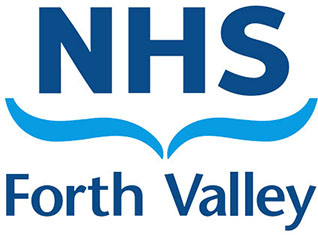Pioneering Physios – new roles are making a different to local patients
Physiotherapy Practitioners working in two GP practices in NHS Forth Valley are proving a great success with patients, and freeing up more time for GPs to see complex cases.
Based in the Kersiebank Medical Practice in Grangemouth, and at Bannockburn Medical Practice in Stirling, they form part of a wider multidisciplinary team created to support local GPs after NHS Forth Valley took over management of the two GP Practices. Feedback from patients on the new physiotherapy service has been extremely positive with 97% saying they had confidence and trust in their practice physiotherapists. People also reported being given enough time at their appointment, said they were listened to, treated with care and concern and tests and treatments had been explained.
Catherine McRitchie is one of two NHS Forth Valley physiotherapy practitioners based at Bannockburn Medical Practice. She explained: “We decide on the best pathway for the patient following a detailed assessment. This will vary depending on the individuals needs of the patient. Some patients may require to be referred to orthopaedics, pain or rheumatology clinics and others may require information, advice and exercises to help manage their condition. We are able to arrange for further investigations such as X-rays and blood tests and we can all do steroid joint injections as well.”
Preliminary results from an ongoing audit of 858 patients, show three in four were subsequently able to self manage their musculoskeletal condition, about 1 in 20 received a steroid injection, two per cent were referred to orthopaedics, six per cent needed some form of imaging and 26% were followed up at the physiotherapy department at Forth Valley Royal Hospital.
Sarah Conway, the Chartered Society of Physiotherapists professional adviser for Scotland, visited the Kersiebank Medical Practice earlier this year. She said: “This initiative is an excellent example of how the skills of physiotherapists can be used to take pressure off GP services. Although the service was prompted initially by a GP shortage it has the potential to work in many other primary and GP settings throughout Scotland.”
GPs at Bannockburn described the service as a win-win situation. The fact patients could be seen within a week to provide them with a diagnosis, management plan and /or initial treatment instead of referring them to a physiotherapy clinic had increasing satisfaction all round.
CAPTION: (left to right) Catherine McRitchie (Bannockburn) Helen Turner (Kersiebank) Fiona Downie (Bannockburn) Wendy Monteith (Kersiebank)
What the patients say:
• asked if they were given enough time by the physiotherapists, 92% said ‘very good’ and 8% said ‘good’
• asked if they had been listened to, 96% said ‘very good’ and 4% said ‘good’
• asked if they had been involved in decisions about their care, 89% said ‘very good’ and 11% said ‘good’
• asked if they were treated with care and concern, 91% said ‘very good’ and 9% said ‘good’
• asked if their tests and treatments had been explained, 88% said ‘very good’ and 11% said ‘good’ and 1% said it did not apply
• asked if they had confidence and trust in their physiotherapy practitioner, 97% said ‘very good’ and 3% said ‘yes, to some extent’





